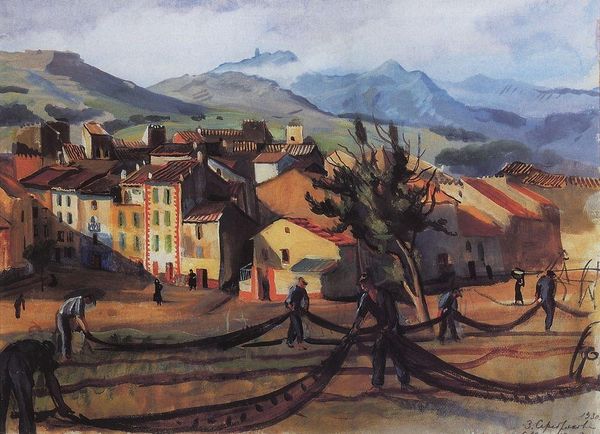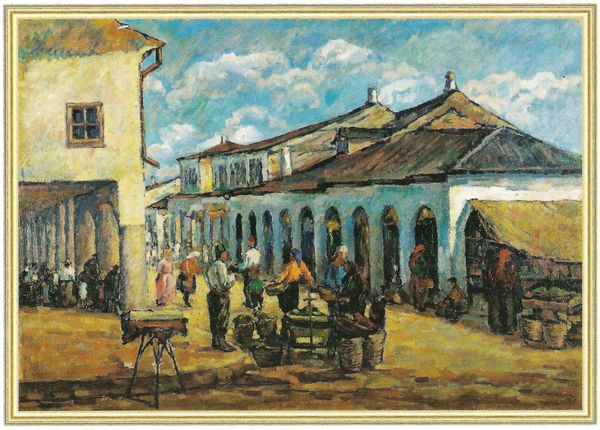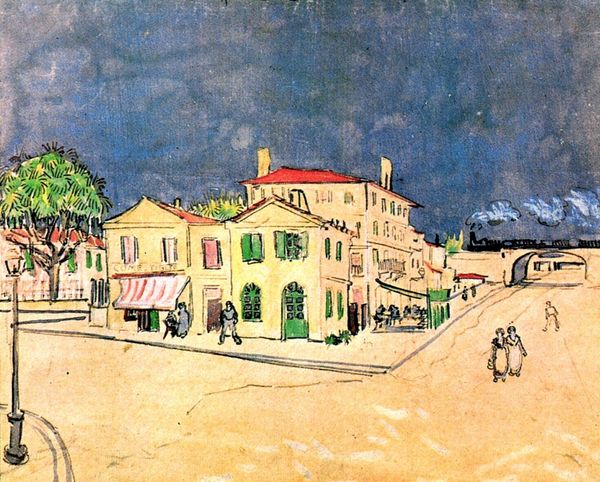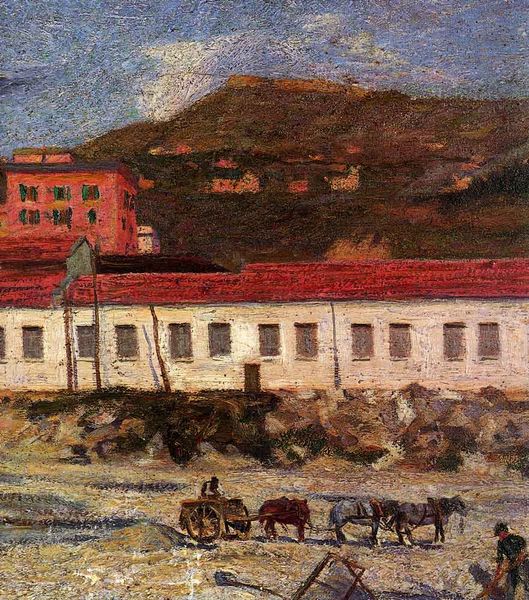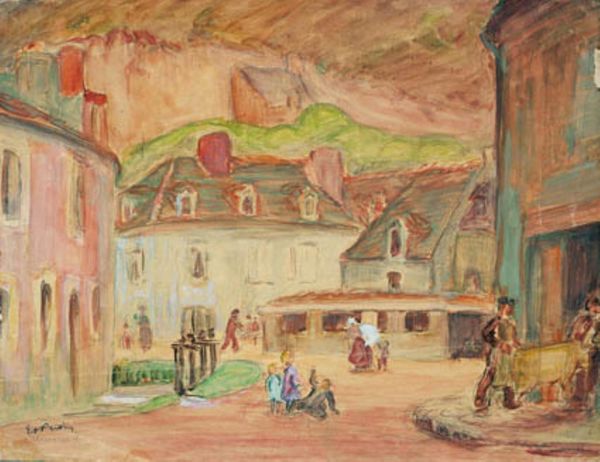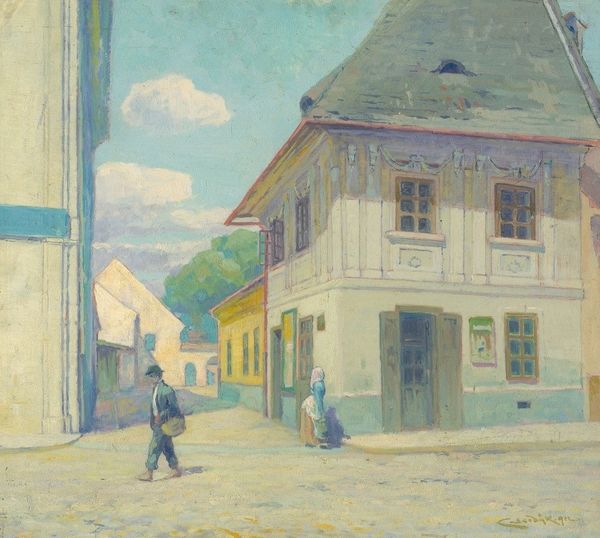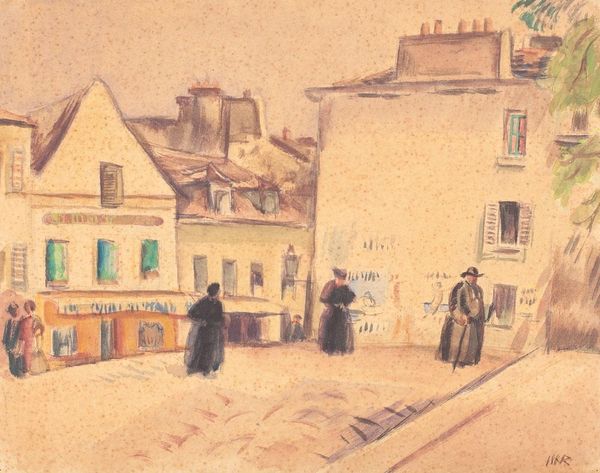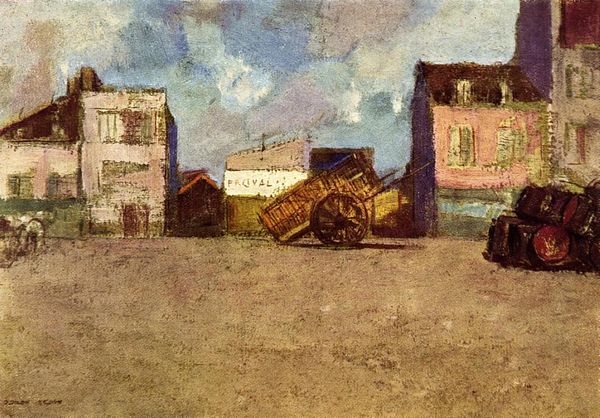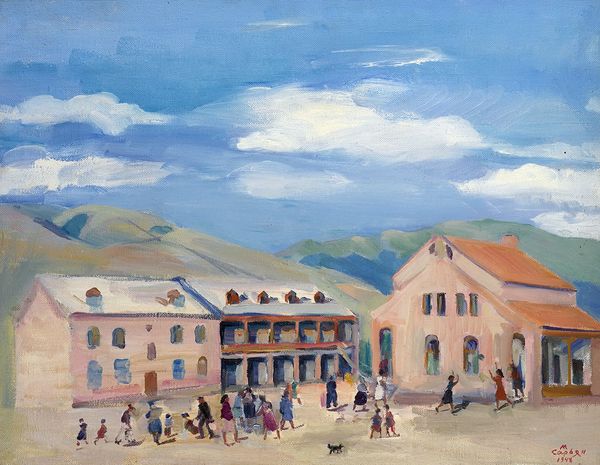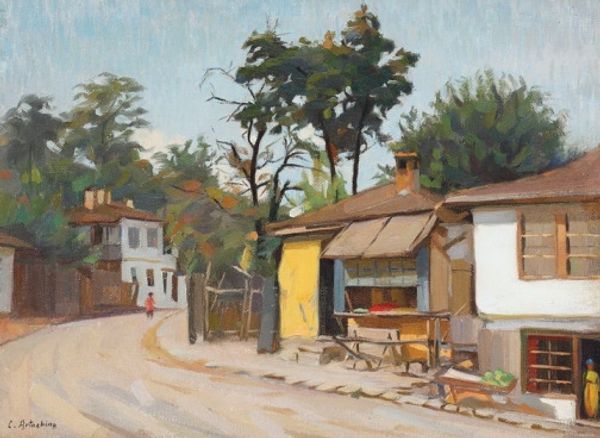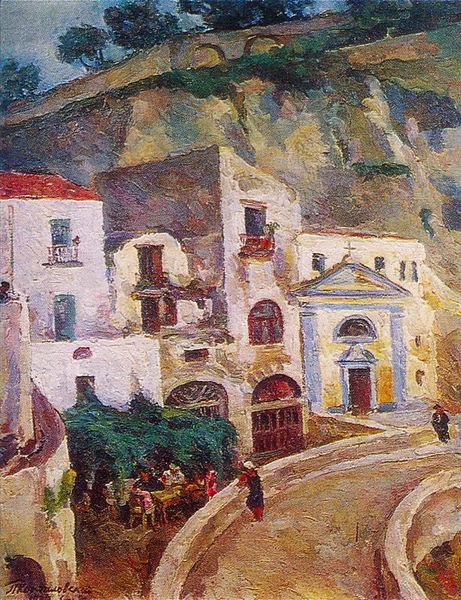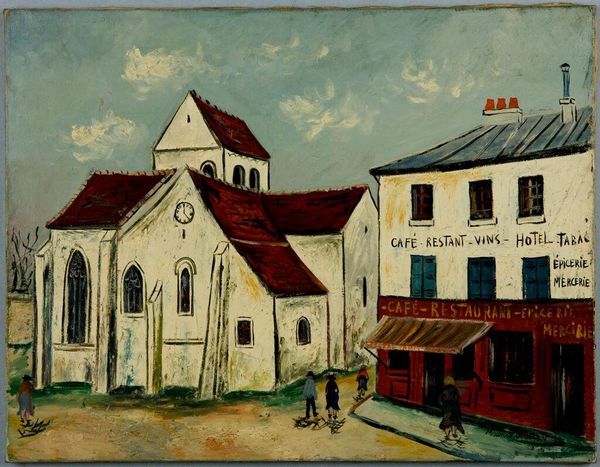
Dimensions: 75 x 77 cm
Copyright: Public domain US
Editor: This is Martiros Sarian's "Old Tbilisi" from 1917, an oil painting depicting a vibrant cityscape. I’m really struck by how simplified and geometric the forms are, and the way he's used color—it almost feels dreamlike. What do you see when you look at this piece? Curator: The first element that captures my attention is the painting's structural composition. Observe the planes of color—the yellow, pink, and red of the buildings against the muted background. Do you notice how Sarian uses these blocks of color to define space, rather than relying on traditional perspective? Editor: I do! It flattens the image in a way. The mountain in the back almost seems like it's on the same plane as the buildings. Curator: Precisely. This deliberate flattening, coupled with the simplified forms, removes the work from a purely representational function. The semiotics of color here are also quite interesting; notice the contrast between the vibrant primary colours in the foreground and the muted blues and browns in the background, dividing this in a dynamic manner. Editor: So, by simplifying the forms and emphasizing color, he’s moving away from just showing us Tbilisi, and focusing more on the… feeling of Tbilisi? Curator: One could argue that it is his interpretation of Tbilisi, expressed through the formal language of the painting, yes. Ask yourself how your perception shifts if we changed these intense primary colours for a grayscale scheme, would this diminish its appeal? How would this challenge any potential for further emotional associations of a modern Tbilisi? Editor: That makes sense. It's about how the colors and shapes interact to create an experience, more than just what they depict. This was helpful. I never looked at it that way! Curator: Indeed, exploring how formal elements interact allows us to unearth greater nuances behind a work's initial impression.
Comments
No comments
Be the first to comment and join the conversation on the ultimate creative platform.
